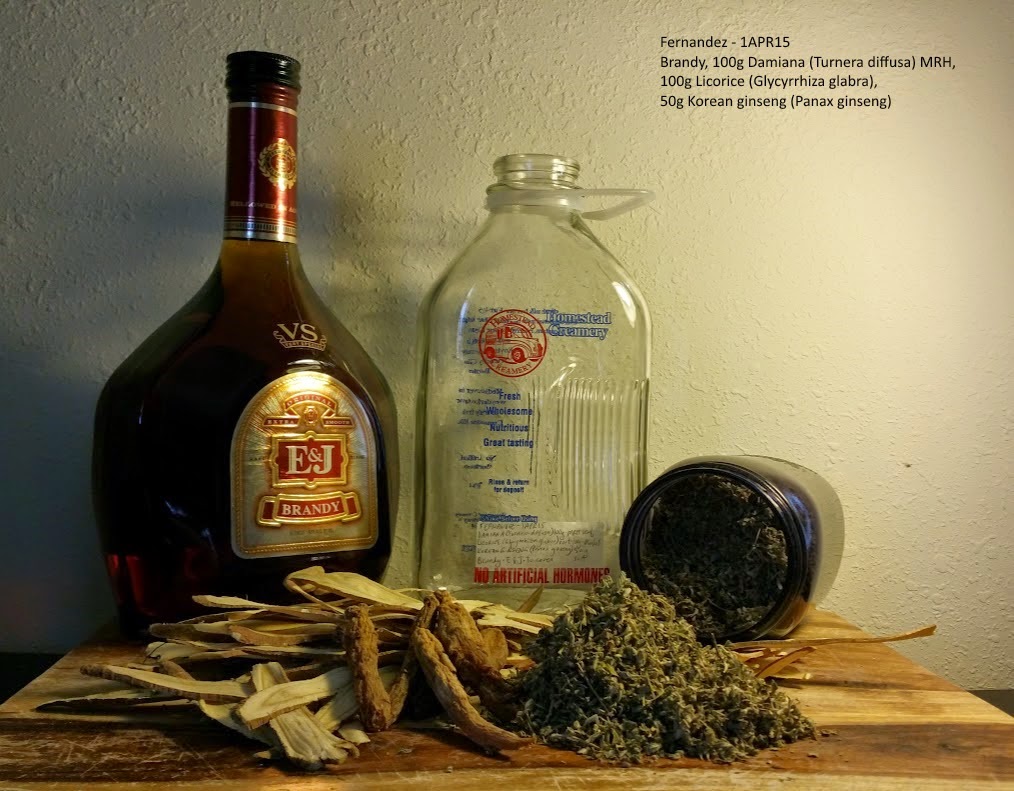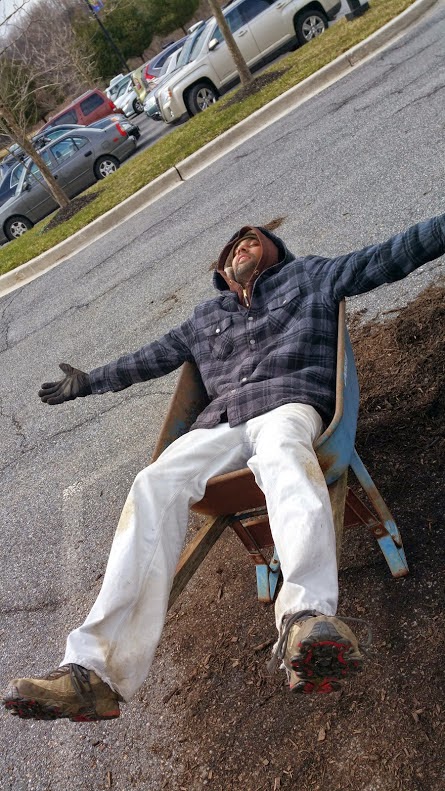While searching for suitable botanicals for a loved one, I stumbled upon Damiana (Turnera diffusa). Naturally,
I developed a fascination with damiana’s many applications. It is used as a tonic,
stimulant, mild laxative, diuretic, antidepressant,
testosterogenic, aphrodisiac; and hypochondriastic
(Chevallier, 2000; Grieve, 2015).
Indeed, many have reported that it is impossible to be unhappy while sipping on a cup of damiana tea. I've luxuriated in many a cup of damiana tea myself, but the following recipe for a damiana cordial really seized my heed. It binds the flavors of damiana and cherry. Hmm... This is sure to be a delectable union.
"Enough of the balmy verbiage," you say?
Magnificent.
Magnificent.
- 25g Asian ginseng (Panax ginseng)
- 50g Licorice root (Glycyrrhiza glabra)
- 50g Dried damiana leaves (Turnera diffusa)
- Brandy
- Black cherry concentrate
- Honey to taste
Because my purpose of preparing this concoction is to celebrate with friends, I doubled the amounts in my preparation.
I have yet to acquire the black cherry concentrate, so it is not included in the photo.
A word about combining "extras" with solvents: In this case, the brandy is the solvent. The brandy will extract active, beneficial constituents from the licorice, ginseng and damiana for easy access as a formulated beverage. If one were to saturate a solvent with flavors such as cherry concentrate or honey before maceration, it would diminish the extraction power of the solvent. *At this point, one should note that making tinctures from flavored vodka will not yield potent results.*
I will not need the black cherry concentrate or the honey until after the damiana, licorice, and ginseng have macerated in the brandy for at least seven weeks.
The Korean ginseng in the picture is in whole root form. To prepare these roots for optimal extraction, I had to increase the surface area of the root available to the brandy. This means I had to slice it, but trying to process dry roots with a knife is a futile objective.
To surmount this dilemma, the roots were steamed for about twenty minutes, sliced, then dried again. Then the Korean ginseng, licorice, and damiana were placed into the maceration vessel, covered with brandy, and left in the dark to macerate. I shake the vessel daily. I might sample the amalgamation after seven weeks, but I just might let it macerate until it comes time to celebrate.
After straining, I will add honey to taste, and for each 250ml liquid, I will add 125ml black cherry concentrate. Then, for decorative purposes, I imagine I will add some new licorice slices and whole ginseng root to the bottle as well. After all, this formula is meant to be love-heightening, and I think that the appearance of a cordial with roots in it adds a little extra something for the senses.
Camaraderie shared is one of the truest and greatest advantages of a cordial, and it scorches my heart that not everybody can enjoy alcohol. For some, religious practice may prohibit the use of alcohol; others are intolerant and/or battle addiction. Other physical conditions such as pregnancy inhibit the use of alcohol, and age can also play a factor. In our culture, it is illegal to consume alcohol before reaching the ripened, judicious, wise age of 21...
Restrictions aside, I think that alcoholic beverages can be good for the mind, body and spirit. How lovely it is that liquor can be further enhanced with a little bit of herbal love!
And I couldn't end this post without offering one final glimpse of the cordial's backside, which with its macerating ginseng, is a beauty to behold.
Chevallier, A. (2000). Encyclopedia of Herbal Medicine. London: Dorling Kindersley.
Database:RegionalBusinessNews. (2010, 6 1). Make Your Own Medicine: Low Libido. Daily Mail, p. 48.
Grieve. (2015). Damiana. Retrieved from Botanical.com: A Modern Herbal: http://www.botanical.com/botanical/mgmh/d/damian05.html












